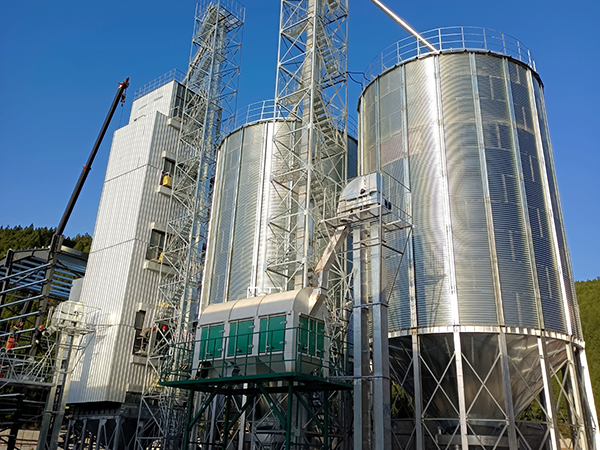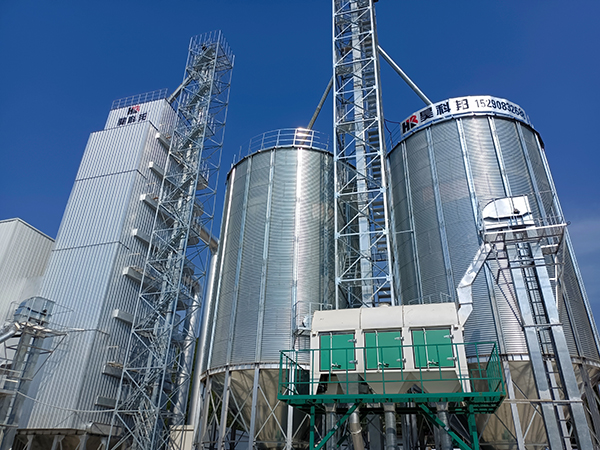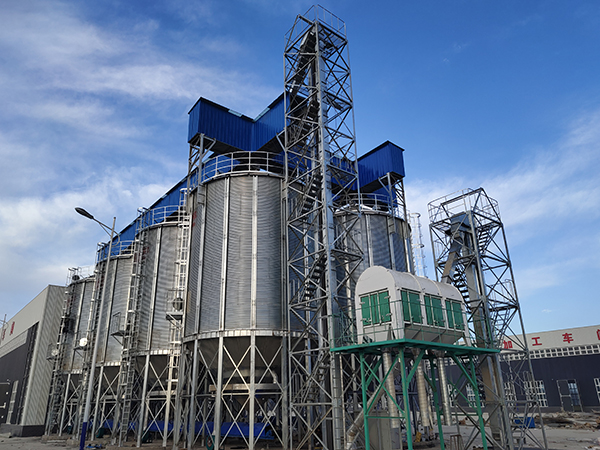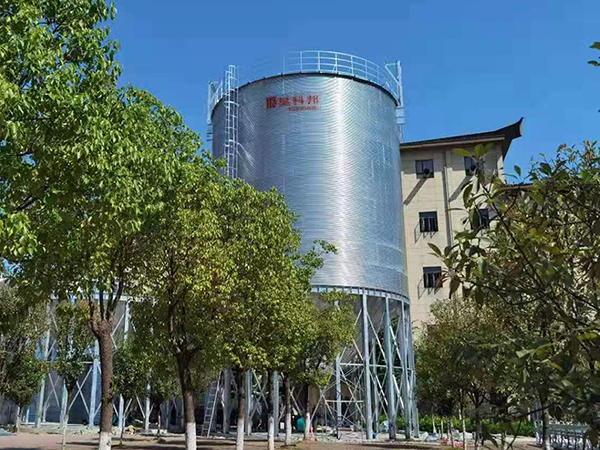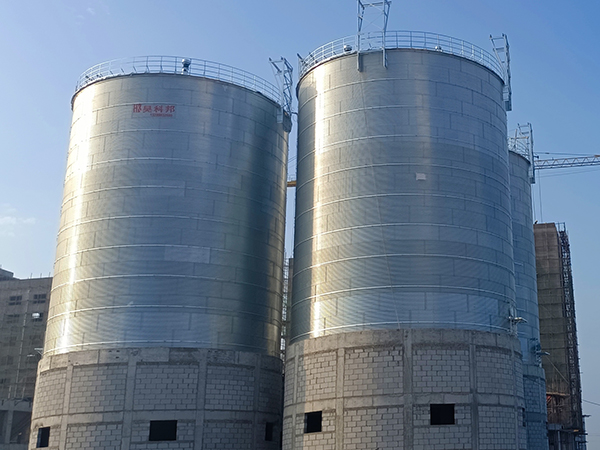steel storage silo
A steel storage silo is a facility used for storing large volumes of bulk materials, commonly used in agriculture, grain processing, chemical, and industrial sectors. Made from high-strength steel
steel storage silo Introduction
A steel storage silo is a facility used for storing large volumes of bulk materials, commonly used in agriculture, grain processing, chemical, and industrial sectors. Made from high-strength steel, these silos are known for their durability, corrosion resistance, and good sealing properties, enabling safe and efficient long-term storage of various materials such as grains, seeds, feed, fertilizers, cement, and chemical raw materials.
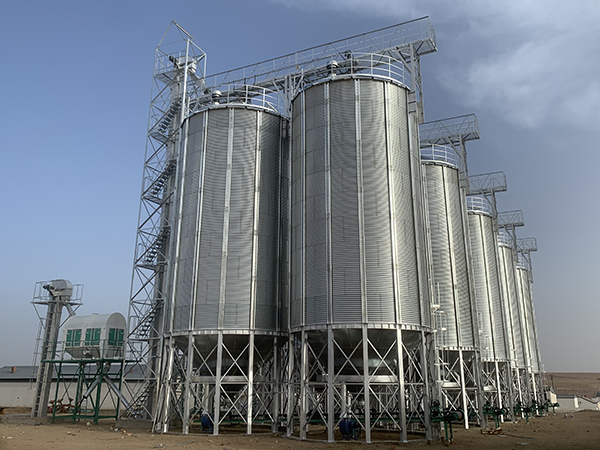
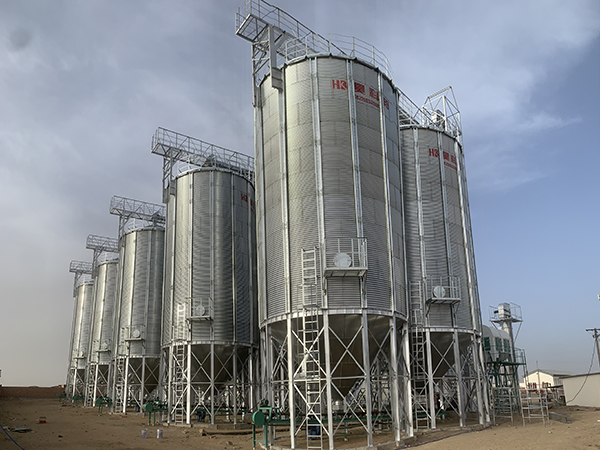
Main Features of a Steel Storage Silo
High Strength
Steel has high strength and durability, capable of withstanding the weight of large quantities of materials and external pressure.
Corrosion Resistance
Steel silos are usually galvanized or coated, providing excellent corrosion resistance suitable for various climates and environmental conditions.
Good Sealing Performance
They are designed with excellent sealing properties to prevent moisture, air, and contaminants from entering, ensuring that materials are not affected by external influences during storage.
Large Capacity
Capable of storing large quantities of materials, making them suitable for large-scale production and storage needs.
Automated Management
Can be equipped with automated systems, including sensors, monitoring devices, and automatic loading and unloading equipment, to improve management efficiency and safety.
Quick Loading and Unloading
Designed with efficient loading and unloading systems to quickly handle the intake and outflow of materials, saving time and labor.
Ventilation and Temperature Control
Equipped with ventilation and temperature control systems to prevent mold, spoilage, or spontaneous combustion of the stored materials.
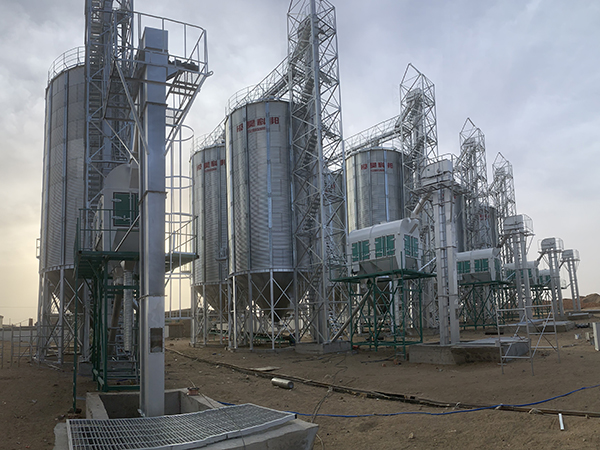
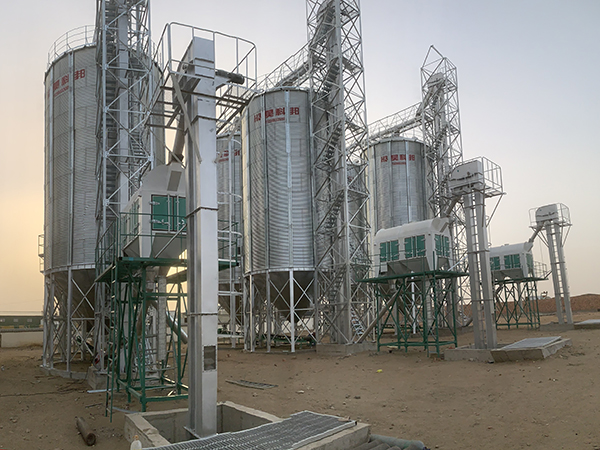
Main Components of a Steel Storage Silo
Silo Body
The main storage space, usually cylindrical, made of high-strength steel with a corrosion-resistant surface.
Top Cover
Seals the top of the silo to prevent external contaminants from entering, designed with ventilation or exhaust ports to maintain internal air circulation.
Bottom Structure
Includes flat bottoms or conical bottoms to support material storage and discharge operations, with conical bottoms aiding in natural material flow.
Loading and Unloading System
Includes conveyor belts, screw conveyors, or pneumatic conveying systems to load or unload materials from the silo.
Ventilation System
Includes fans and ventilation ducts to keep the internal air circulating and prevent material heating and molding.
Temperature Control System
Includes temperature sensors and control devices to monitor and regulate the temperature inside the silo, ensuring optimal storage conditions.
Monitoring System
Equipped with various sensors and monitoring devices to track the condition of the materials inside the silo in real-time, such as temperature, humidity, and material levels.
Safety Equipment
Includes explosion vents, fire alarm systems, and emergency exits to ensure rapid response in case of emergencies.
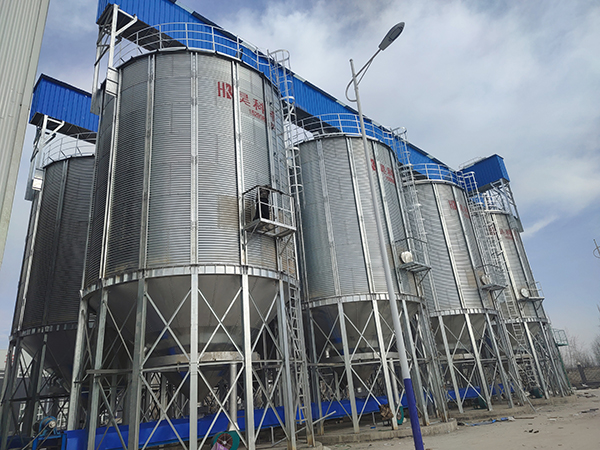
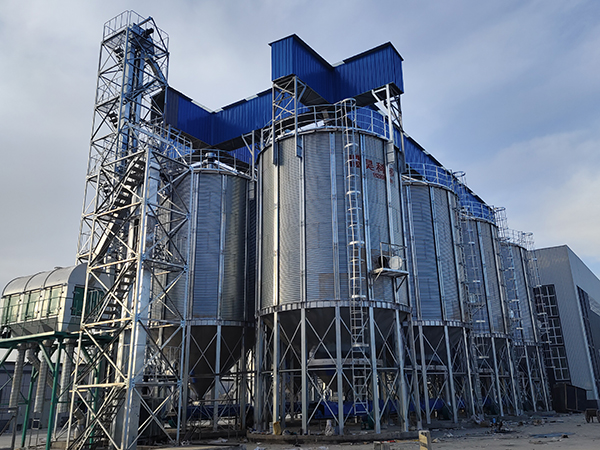
Main Advantages of a Steel Storage Silo
Efficient Storage
Allows for the centralized storage of large quantities of materials, saving space and costs, and facilitating management and logistics.
Safety and Protection
Provides excellent sealing and protection measures, ensuring materials are not affected by external environmental conditions during storage.
Automated Operation
Enhances operational efficiency and safety through automated equipment and systems, reducing manual intervention and errors.
Extended Shelf Life
Prolongs the shelf life of materials through effective ventilation and temperature control systems, reducing losses.
Robust Structure
The high strength and durability of steel ensure the stability and safety of the silo over long-term use.
Versatility
Suitable for storing various types of materials, offering flexible storage solutions.
Application scope of Storage silo
Coban Small Storage Silo is widely used for grain storage such as wheat, corn, soybean, paddy, rice, soybean meal, barley, malt, sunflower seeds,Coffee Beans, rapeseed, peanuts, flour, and other powder materials, oat, special Silo, and seeds, etc.

Storage silo technical parameters
Scientifically speaking, the Silo capacity should be measured with volume (m3). Even in the same grain Silo, the storage tons will be different for different grains with different densities. The following table is calculated based on a Silo density of 0.75kg/m3, and surely HKB customizes Silo systems unique for you.
| Most Popular Hopper Bottom Steel Silo Technical Specifications | ||||||||
| Capacity | 50Ton | 100Ton | 150Ton | 200Ton | 300Ton | 500Ton | 1000Ton | 1500Ton |
| Model | TCZK
03605 |
TCZK
04507 |
TCZK
05507 |
TCZK
06406 |
TCZK
07307 |
TCZK
07313 |
TCZK
11010 |
TCZK
12811 |
| Diameter(m) | 3.667 | 4.584 | 5.500 | 6.417 | 7.334 | 7.334 | 11.000 | 12.834 |
| Total Height(m) | 9.56 | 12.53 | 13.25 | 12.85 | 14.70 | 21.42 | 20.95 | 23.51 |
| Volume(m³)
Density:0.75ton/m³ |
69 | 150 | 222 | 273 | 415 | 699 | 1346 | 2039 |
| Most Popular Flat Bottom Steel Silo Technical Specifications | ||||||||
| Capacity | 1000Ton | 1500Ton | 2000Ton | 2500Ton | 3000Ton | 5000Ton | 8000Ton | 10000Ton |
| Model | TCK
10014 |
TCK
11915 |
TCK
13715 |
TCK
15514 |
TCK
15518 |
TCK
18321 |
TCK
24718 |
TCK
25621 |
| Diameter(m) | 10.084 | 11.918 | 13.750 | 15.584 | 15.584 | 18.334 | 24.751 | 25.668 |
| Total Height(m) | 18.69 | 20.34 | 20.87 | 20.30 | 24.78 | 28.60 | 26.99 | 30.60 |
| Volume(m³)
Density: 0.75ton/m³ |
1335 | 2009 | 2701 | 2467 | 4145 | 6693 | 10879 | 13484 |


